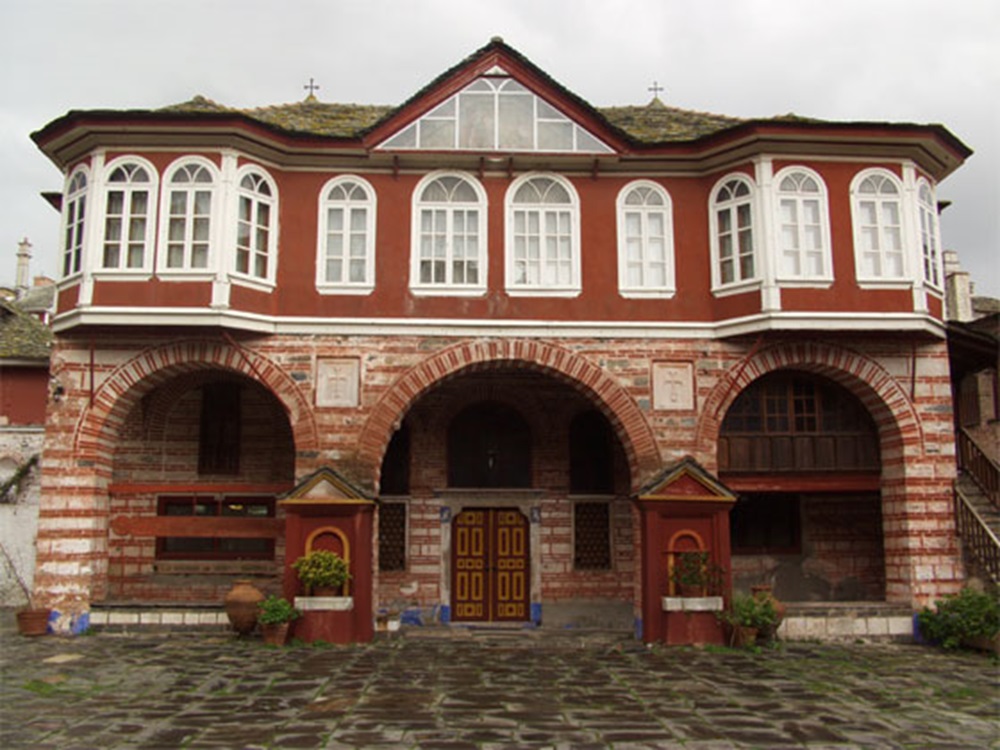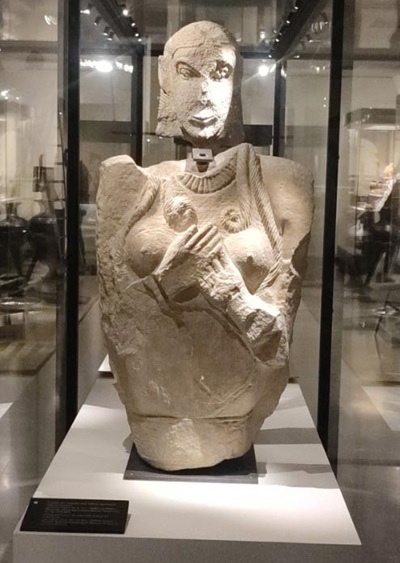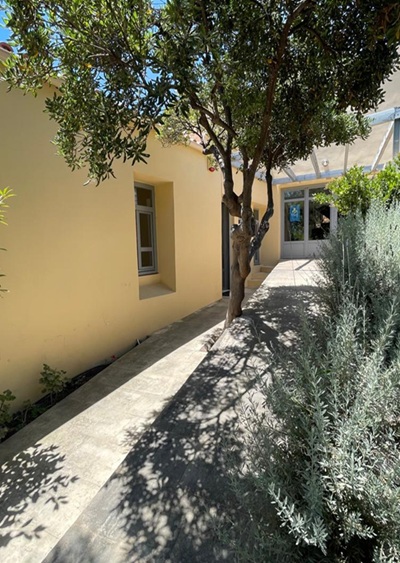
In the context of the works for the consolidation and restoration of the high altar of the Holy and Great Monastery of Vatopedi, the Ephorate of Antiquities of Halkidiki and Mount Athos carried out selective excavations in order to search for the Byzantine high altar.
The work has brought to light a large part of the original Byzantine high altar of the 10th century, which was also cross-shaped, like the present one. The enlargement of the 12th-century altar to the west and the occasional overlapping floors and bases of the tables were also found, evidence of the renovation work that had been going on over a period of some 700 years. The successive phases are documented by a sufficient number of sherds of glazed vases, which cover a wide period from the end of the 10th century to the late post-Byzantine period.
From the written sources we know of three points in time related to the Byzantine High Altar: a) the first is related to the foundation of the monastery at the end of the 10th century, b) the second to the enlargement of the altar in the last years of the 12th century, c) and the third to the renovation of the altar in 1319. The results of the excavation are in remarkable agreement with the data from the historical sources.
The current high altar of the Holy and Great Monastery of Vatopedi was built in 1785 to the west of the catholic church. It has a cross-shaped floor plan, niches at the ends of the three antennas of the cross and two auxiliary rooms in the northeast and southeast corners. The frescoes in the interior were painted in 1786 by the monk Makarios from Galatisti. The Byzantine marble tables were reused in the interior of the church, apparently from the earlier refectory. According to historical evidence, the earlier altar was in approximately the same position as the present one.
Also very important for the history of the site of the Monastery of Vatopedi are the building remains revealed by the excavation cuts deeper than the level of the floor of the Byzantine altar, which can be dated to the Early Byzantine period and possibly related to the remains of the basilica that were found 20 years ago under the Monastery’s Katholikon, during excavations outside its northern side.
The excavation cut in the north-eastern auxiliary compartment of the existing bank revealed a Byzantine workshop with a fragmentary surviving ceramic kiln, tank and deposit. From the characteristics of the kiln’s operation we can assume that it was mainly intended for the firing of small tableware (pint jars, cups). The presence of the kiln indicates the on-site production of pottery to meet the daily needs of the monastery.







Leave A Comment